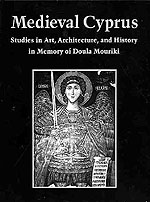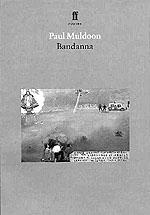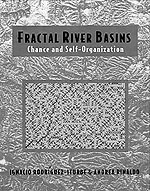In print
|
|
|
|
|
Colonial Legacies: The Problem of Persistence in Latin American History, edited by Associate Professor of History Jeremy Adelman (Routledge, 1999)
"Colonial Legacies examines the main paradigm in Latin American history&endash;how and why colonial baggage, both cultural and institutional, has kept the region from living up to liberal and capitalist expectations. Colonial Legacies explains what it means to have a past that looms so heavily on the present, showing how the legacies have multiple origins and are rooted in a triangular relationship between Europe, Africa and the Americas. The contributors to this volume show that the timelines of Latin American history cannot be reduced to simple linear accounts of cumulative change and evolution and, in doing so, shed new light on this fascinating and complex subject." (from the book cover)
|
|
|
|
|
In Praise of Antiheroes: Figures and Themes in Modern European Literature, 1830-1980, by Henry Putnam University Professor of Romance Languages and Literatures and Comparative Literature Victor Brombert (University of Chicago Press, 1999)
"Victor Brombert's latest book follows the antihero topos over 150 years, across five languages (excluding English) and through works by Büchner, Gogol, Dostoyevsky, Flaubert, Svevo, Hasek, Max Frisch, Camus and Primo Levi. Brombert's head must buzz like a translating room at the United Nations. With an eye to his readers, however, he restricts his discussions to translated and well-known works. The 10 chapters look like a well-planned semester-length course for a class of handpicked graduates Brombert's praise for anti-heroes offers an oblique riposte to George Steiner&endash;'We do not know whether the study and delight a man takes in Shakespeare make him any less capable of organizing a concentration camp.' Touching lightly on great issues, Brombert's elegant study ventures a tentatively affirmative answer." (review by John Sutherland, New York Times Book Review, May 9, 1999)
|
|
|
|
|
Celestial Encounters: The Origins of Chaos and Stability, by Florin Diacu and Professor of Mechanical and Aerospace Engineering Philip Holmes (Princeton University Press, 1999)
"Stories about the history of celestial mechanics are the subject of this delightful book. The authors interweave numerous anecdotes about the personalities involved in the discoveries with technical details of the mathematical ideas themselves. Among other topics, Stephen Smale's discovery of the 'horseshoe,' the first chaotic dynamical system to be analyzed completely, is described in detail. We read about Smale's exploits on the beaches of Rio where the horseshoe was discovered, and at the same time get a primer on symbolic dynamics, one of the principal tools used to analyze chaos. So this book is a pleasant mix of things technical and things historical." (review by Robert Devaney, Science, December 20, 1996)
|
|
|
|
|
Image and Belief, edited by Colum Hourihane, director of the Index of Christian Art. (Publications of the Department of Art and Archaeology, Princeton University, in association with Princeton University Press, 1999)
"The Index of Christian Art, founded in 1917, is today recognized as the premier resource for Christian and medieval iconography prior to 1400. In this volume marking its 18th anniversary, 18 scholars present studies focusing on the Index's twin strengths: iconography and methodology. From the heterogeneous imagery of the Crusaders to the repellent iconography of social rejection the contributions in the first part of the volume provide stimulating examples of recent interdisciplinary research in iconography. With the growing application of computer databases and the Internet to the field of art history, the process of describing and classifying the subjects of works of art has become even more important and controversial. The papers in the second section of the volume deal with this critical area, giving analytical proposals for improving art-historical standards through computerization." (from the book cover)
|
|
|
|
|
Medieval Cyprus: Studies in Art, Architecture and History in Memory of Doula Mouriki, edited by Nancy P. Sevcenko and Christopher Moss, technical staff member in Art and Archaeology (Princeton University Press, 1999)
"Cyprus has always shown a remarkable openness to divergent cultures--at no time more than in the Middle Ages, when successive Byzantine and Latin conquerors settled on the island and dominated its art. These two societies profoundly influenced each other and their interchange resulted in art of great richness and diversity. The 14 distinguished and generously illustrated studies in this volume provide sharply focused views of the island's artistic evolution in this period, beginning with an archaeological report on Early Christian graves built into abandoned pagan tombs in the fifth century and ending with an essay on the extravagant Venetian-style Cypriot frescoes of the 16th century. In between are a wide range of studies of Byzantine Cypriot architecture, stone carvings, frescoes, icons, illuminated manuscripts and ceramics." (from the book cover)
|
|
|
|
|
Bandanna, by Howard G.B. Clark '21 University Professor in the Humanities Paul Muldoon (Farrar, Strauss, Giroux, 1999)
"Following his highly praised Shining Brow (1993), which was also written as an opera libretto for the American composer Daron Aric Hagen, Paul Muldoon's Bandanna takes us into very different territory. Its action is set in a small town on the Mexican border; it includes illegal immigrants and a corrupt law officer among its dramatis personae; but at its heart is an old-fashioned tale of sexual jealousy and murderous revenge. The drama is powered by a strong emotional thrust, most of it conveyed in the form of popular song, and leads to a shattering climax. Bandanna demonstrates yet again the ever-increasing range of this most versatile of poets." (from the book cover)
|
|
|
|
|
Fractal River Basins, by Professor of Civil and Environmental Engineering Ignacio Rodríguez-Iturbe and Andrea Rinaldo (Cambridge University Press, 1999)
"The interplay between probability, physics and geometry is at the frontier of current studies of river basins. This book considers river basins and drainage networks in light of their scaling and multiscaling properties and the dynamics responsible for their development. The hydrology of river basins and prediction of their growth demands knowledge of a range of temporal and spatial scales. At the core of Fractal River Basins is the search for the hidden order of these temporal and spatial variabilities in river basins, despite variations in size, climate and geology. The search concentrates on the detection and dynamic origins of fractal features, and the crucial role of self-organization." (from the book cover)
top






